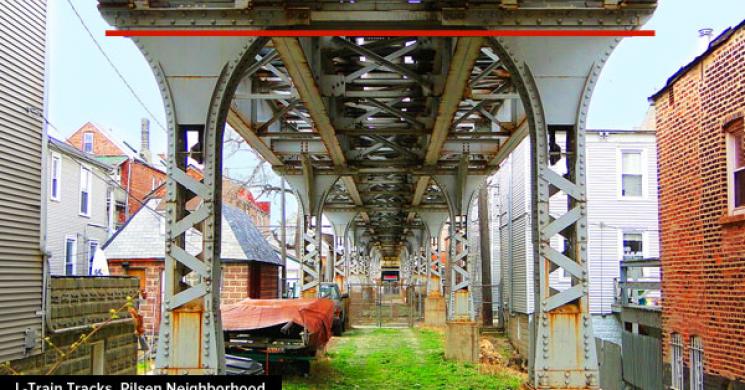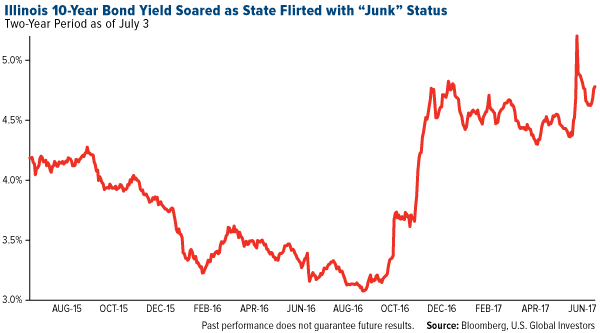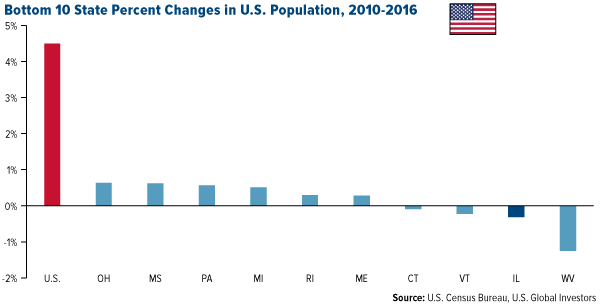
A recent Capital Economics (CE) report shines an unforgiving light on Illinois’ ongoing budget woes—and what it finds isn’t pretty. The crisis, which has affected every level of government in the state, is a cautionary tale for not only public spending run amok but also independent investors taking too large of a risk by seeking high yields.
The Land of Lincoln’s credit is already the lowest-rated in the union and, until recently, its debt came precariously close to being downgraded to “junk.” Were this to happen, it would become the first state ever to receive such an ignoble rating.
The state’s 10-year bond yield has soared in recent months, which might attract certain unwary speculators. It’s our belief, however, that such debt should generally be avoided, as the risks are especially high.
As I write this, a state budget could possibly be successfully negotiated, making it the first time in over two years that Illinois has operated with a budget. Republican Gov. Bruce Rauner already vetoed the first bill that reached his desk, which includes tax hikes, but the veto was immediately overridden by the State Senate and is now headed for the House.
No matter the outcome, the point here is that political dysfunction is unfavorable—to put it lightly—and muni investors should remain cautious.
Illinois isn’t the only state facing problems. Connecticut, Delaware, Maine, Massachusetts, New Jersey, Oregon, Rhode Island and Wisconsin are all (or were) mired in similar budgetary impasses. New Jersey public beaches reopened just in time for July 4 celebrations after a high-profile government shutdown closed them down.
For many muni investors, navigating around these numerous pitfalls might seem overwhelming. That’s why I believe an actively-managed municipal bond fund such as our Near-Term Tax Free Fund (NEARX) could be the solution.
More than 95 percent of NEARX is invested in munis that hold between an A and AAA investment-grade rating as of March 31. What this means is we’ve historically avoided exposure to debt issued by poorly-managed municipalities.
We also like to stay on the short end of the yield curve, especially now that the Federal Reserve has begun a new interest rate cycle. When rates rise, bond prices fall, and short- and intermediate-term munis are less sensitive to rate increases than longer-term munis whose maturities are further out.
To learn more about how rates affect municipal bonds, read our whitepaper.
On the Brink of Bankruptcy
Illinois’ total debt currently stands at about $60 billion, according to Capital Economics, which is above Detroit’s $20 billion bankruptcy in 2013 and just below Puerto Rico’s $70 billion debt. The state’s unfunded pensions—for teachers, professors, state employees, judges, emergency personnel and more—could be as high as $250 billion. That puts each Illinoisan on the hook for an estimated $56,000.
Political dysfunction and mismanagement are bad enough, but the state’s adverse demographics make matters even worse.
Illinois is one of only four states whose populations shrank over the past five years, the others being Connecticut, Vermont and West Virginia. CE estimates that over the next decade, the state’s population could grow only 2.2 percent, far below the national average. The number of retirees, meanwhile, could surge 34 percent.
That means fewer working-age Illinoisans are expected to be counted on to support retirees in the coming years, driving up the amount of unfunded pensions even higher.
So even if the Illinois government can resolve its budget soon, we see this as only a short-term fix. The state has even larger obstacles emerging on the horizon.
Our Solution
Again, this is why I think an actively-managed muni fund like NEARX is an attractive solution. Whereas other muni funds might accumulate Illinois debt based on its high yield, regardless of risk, we generally have stuck to investment-grade munis.
It must be said that if you look at NEARX’s holdings today, you’ll see that Illinois is one of its top issuers. The bonds were purchased at an earlier time, before the state’s budgetary problems really began to worsen. We haven’t accumulated any more since it became clear to us that the risks were too great.
We continue to hold the debt because we’re confident the state’s government can successfully unravel the political gridlock and arrive at a short-term resolution. It’s the state’s long-term demographic risks that investors should especially worry about. Our longest Illinois bonds mature in 2021, and as long as the state doesn’t default in the next four years—which, in our opinion, is highly unlikely—we should get a good return on the bonds based on their yield when they were purchased.
Please consider carefully a fund’s investment objectives, risks, charges and expenses. For this and other important information, obtain a fund prospectus by visiting www.usfunds.com or by calling 1-800-US-FUNDS (1-800-873-8637). Read it carefully before investing. Foreside Fund Services, LLC, Distributor. U.S. Global Investors is the investment adviser.
Bond funds are subject to interest-rate risk; their value declines as interest rates rise. Though the Near-Term Tax Free Fund seeks minimal fluctuations in share price, it is subject to the risk that the credit quality of a portfolio holding could decline, as well as risk related to changes in the economic conditions of a state, region or issuer. These risks could cause the fund’s share price to decline. Tax-exempt income is federal income tax free. A portion of this income may be subject to state and local taxes and at times the alternative minimum tax. The Near-Term Tax Free Fund may invest up to 20% of its assets in securities that pay taxable interest. Income or fund distributions attributable to capital gains are usually subject to both state and federal income taxes.
A bond’s credit quality is determined by private independent rating agencies such as Standard & Poor’s, Moody’s and Fitch. Credit quality designations range from high (AAA to AA) to medium (A to BBB) to low (BB, B, CCC, CC to C).
The Near-Term Tax Free Fund invests at least 80 percent of its net assets in investment-grade municipal securities. At the time of purchase for the fund's portfolio, the ratings on the bonds must be one of the four highest ratings by Moody's Investors Services (Aaa, Aa, A, Baa) or Standard & Poor's Corporation (AAA, AA, A, BBB). Credit quality designations range from high (AAA to AA) to medium (A to BBB) to low (BB, B, CCC, CC to C). In the event a bond is rated by more than one of the ratings organizations, the highest rating is shown.
Read more by Frank Holmes









